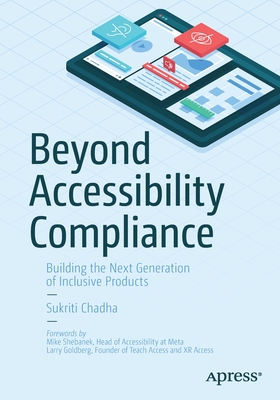Disability Interactions: Creating Inclusive Innovations
暫譯: 殘障互動:創造包容性創新
Holloway, Catherine, Barbareschi, Giulia
- 出版商: Morgan & Claypool
- 出版日期: 2021-12-22
- 售價: $2,740
- 貴賓價: 9.5 折 $2,603
- 語言: 英文
- 頁數: 218
- 裝訂: Quality Paper - also called trade paper
- ISBN: 1636392830
- ISBN-13: 9781636392837
-
相關分類:
使用者經驗 UX
海外代購書籍(需單獨結帳)
商品描述
Disability interactions (DIX) is a new approach to combining cross-disciplinary methods and theories from Human Computer Interaction (HCI), disability studies, assistive technology, and social development to co-create new technologies, experiences, and ways of working with disabled people. DIX focuses on the interactions people have with their technologies and the interactions which result because of technology use. A central theme of the approach is to tackle complex issues where disability problems are part of a system that does not have a simple solution. Therefore, DIX pushes researchers and practitioners to take a challenge-based approach, which enables both applied and basic research to happen alongside one another. DIX complements other frameworks and approaches that have been developed within HCI research and beyond. Traditional accessibility approaches are likely to focus on specific aspects of technology design and use without considering how features of large-scale assistive technology systems might influence the experiences of people with disabilities. DIX aims to embrace complexity from the start, to better translate the work of accessibility and assistive technology research into the real world. DIX also has a stronger focus on user-centered and participatory approaches across the whole value chain of technology, ensuring we design with the full system of technology in mind (from conceptualization and development to large-scale distribution and access). DIX also helps to acknowledge that solutions and approaches are often non-binary and that technologies and interactions that deliver value to disabled people in one situation can become a hindrance in a different context. Therefore, it offers a more nuanced guide to designing within the disability space, which expands the more traditional problem-solving approaches to designing for accessibility. This book explores why such a novel approach is needed and gives case studies of applications highlighting how different areas of focus--from education to health to work to global development--can benefit from applying a DIX perspective. We conclude with some lessons learned and a look ahead to the next 60 years of DIX.
商品描述(中文翻譯)
**殘障互動(Disability interactions, DIX)是一種新的方法,旨在結合人機互動(Human Computer Interaction, HCI)、殘障研究、輔助技術和社會發展等跨學科的方法和理論,以共同創造新的技術、體驗和與殘障人士合作的方式**。DIX 專注於人們與其技術之間的互動,以及因技術使用而產生的互動。這種方法的一個核心主題是解決殘障問題作為一個系統的一部分的複雜問題,這些問題並沒有簡單的解決方案。因此,DIX 促使研究人員和實踐者採取基於挑戰的方法,使應用研究和基礎研究能夠並行進行。DIX 補充了在 HCI 研究及其他領域中發展的其他框架和方法。傳統的可及性方法可能會專注於技術設計和使用的特定方面,而不考慮大規模輔助技術系統的特徵如何影響殘障人士的體驗。DIX 旨在從一開始就擁抱複雜性,以更好地將可及性和輔助技術研究的成果轉化為現實世界。DIX 還更強調以用戶為中心和參與式的方法,涵蓋技術整個價值鏈,確保我們在設計時考慮到整個技術系統(從概念化和開發到大規模分發和訪問)。DIX 也有助於承認解決方案和方法往往是非二元的,並且在某一情境中為殘障人士提供價值的技術和互動,在不同的背景下可能會成為障礙。因此,它提供了一個更細緻的設計指南,擴展了為可及性設計的傳統問題解決方法。本書探討了為何需要這樣一種新穎的方法,並提供了案例研究,突顯了從教育到健康、工作到全球發展等不同焦點領域如何受益於應用 DIX 觀點。我們最後總結了一些經驗教訓,並展望 DIX 的未來 60 年。















